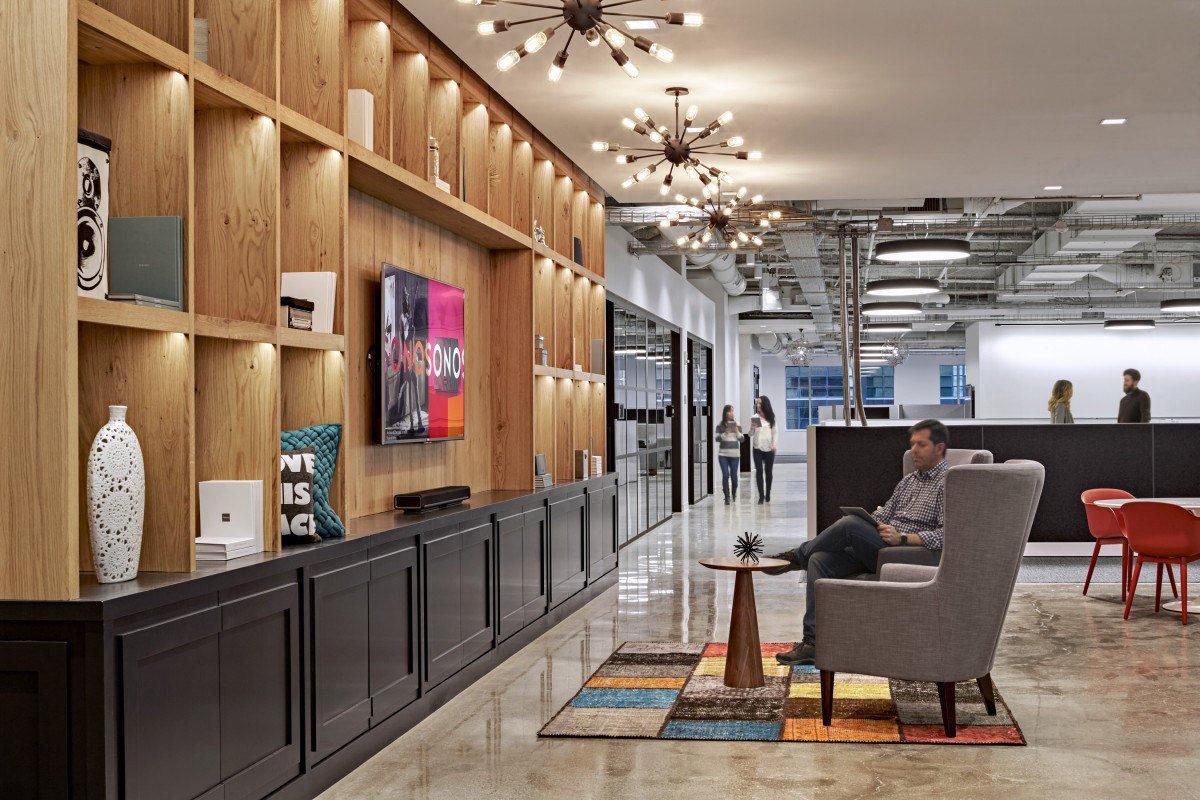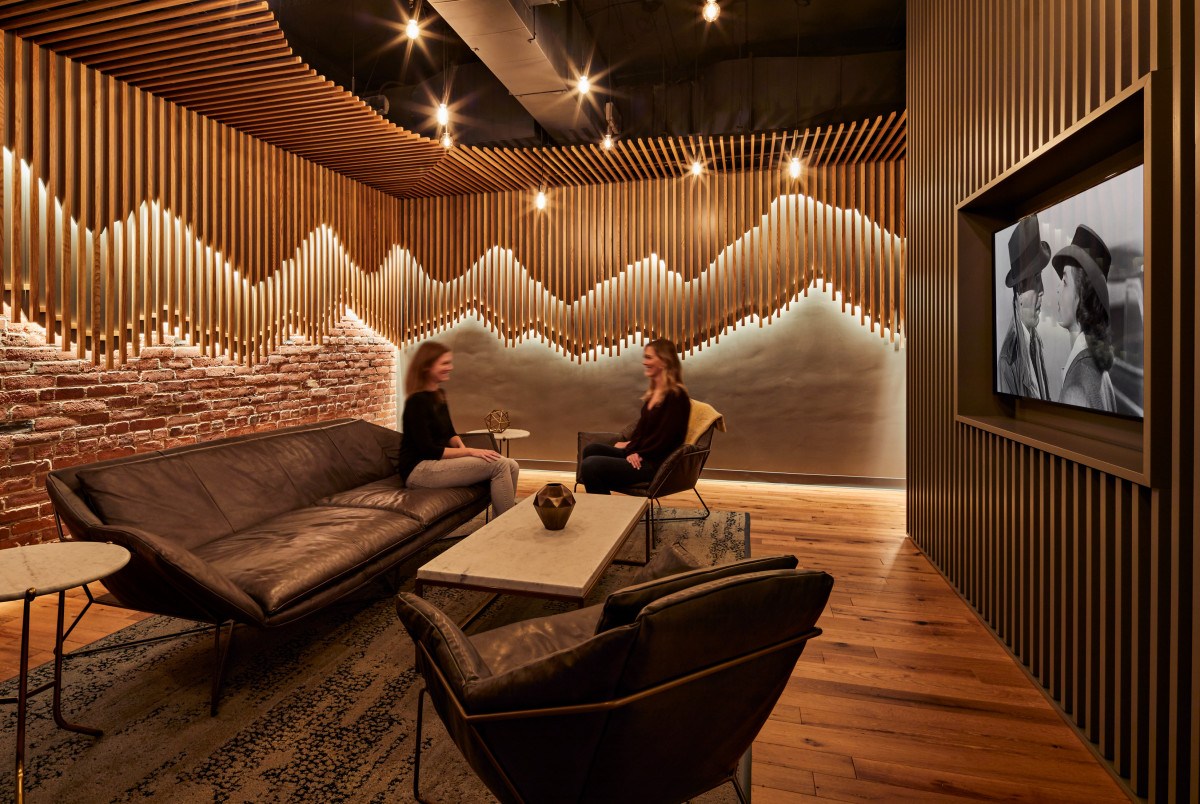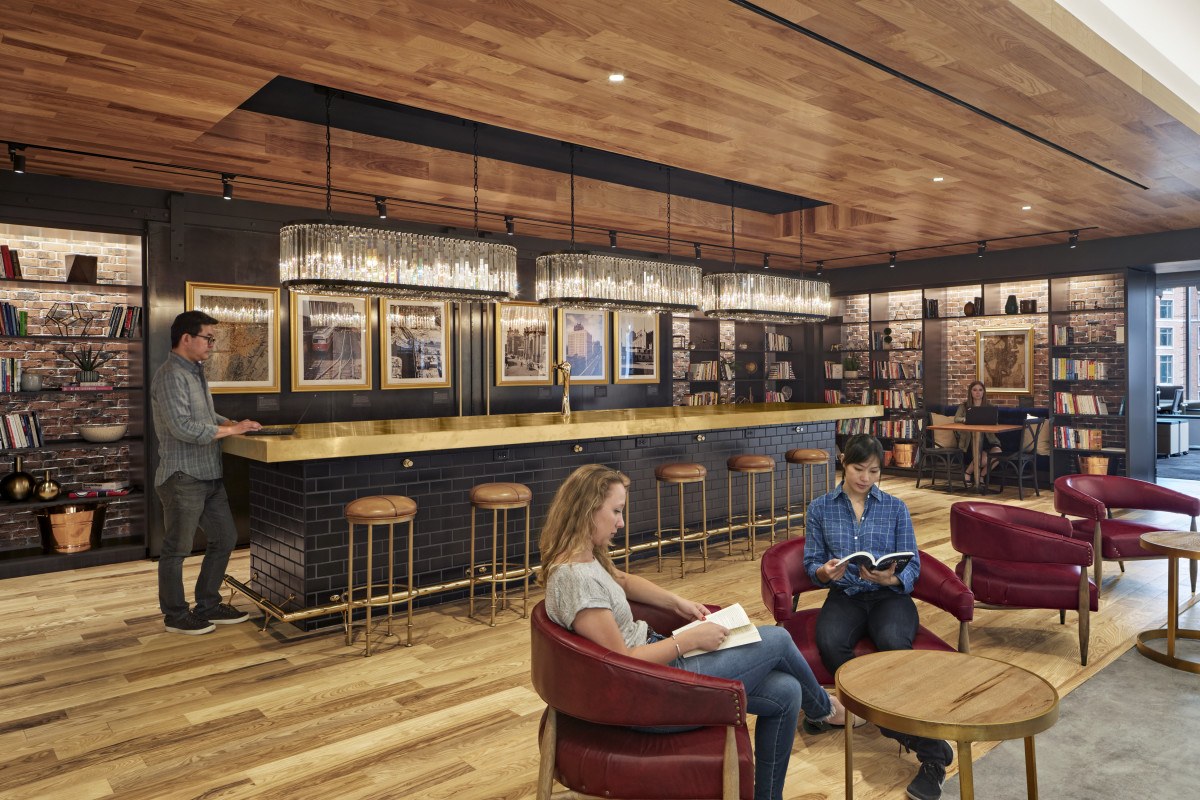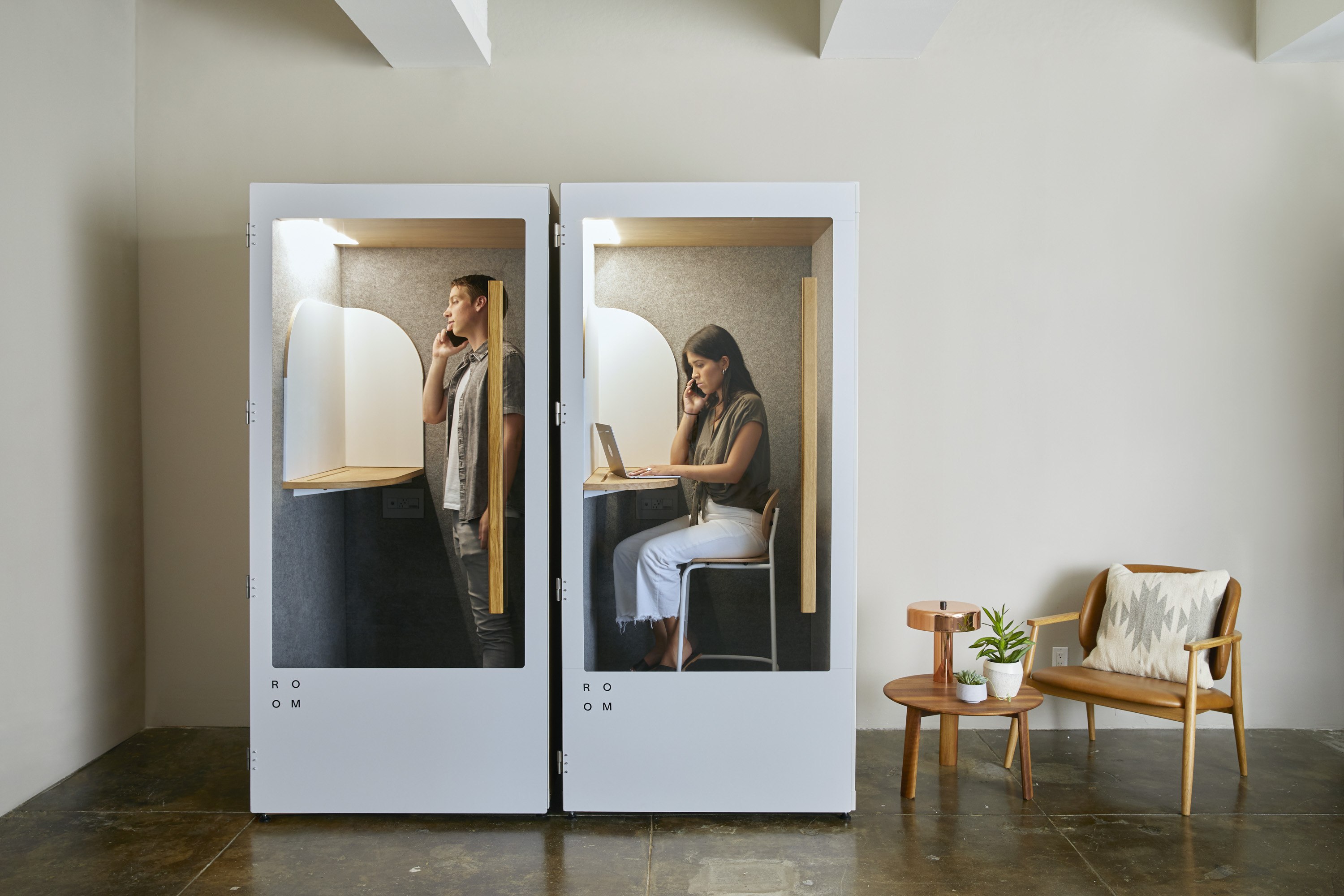Within an Office Phone Booth, I Found Inner Peace
Over a decade after the open office floor plan changed the way we work, the walls are going back up.

Phone booth photo courtesy of ROOM/Galaxy via Getty Images
Readers, I have some exciting news: Last week, I made a phone call on a Wednesday between the hours of 9 a.m. and 5 p.m. and was, extraordinarily, fine with it.
I realize that this achievement may sound rather trivial to most, but for me, this is a very important victory. I am a writer who makes and receives phone calls every day. However, I am also an introvert and—while my editors, unlike my most terrifying college professors, don’t cold call me in meetings, and my coworkers, unlike my childhood Girl Scout troop, don’t make up games in which they try to get me to talk to them—this personality trait of mine is often at odds with the demands of my chosen profession. It’s a problem that’s exacerbated by the Boston magazine office’s semi-open floor plan—separated from my coworkers by only chest-high desk partitions, I adapt a self-conscious, slumped-over posture whenever I must make a call at my desk, trying to ignore the conversation happening six feet away from me, the typing sounds bouncing off the walls, the inexplicable faint music coming from downstairs, and, most of all, the anxiety-inducing thought that everyone around me can hear my every word.
How, then, was I able to be A-OK with the call I made last week? Because I didn’t make it while surrounded by my colleagues at my conspicuous desk at the top of the stairs—I made it from within a ROOM phone booth, an 80 x 37 x 38-inch soundproof pod meant to offer a quiet place to take a call inside a bustling, open workspace. ROOM, a New York-based startup, brought a model of their booth to Boston last week to show prospective users (they’re already in use at Hubspot and Wayfair’s local offices), and in a move that should surprise no one who knows me, I leapt at the chance to sit in total isolation within an enclosed soundproof space for 30 minutes.
In many offices across the city, this option is available to workers on the daily. Over a decade after the fully- or semi- open floor plan trend tore down walls and democratized desks in offices everywhere, we’ve learned a thing or two. Open offices sure look a lot cooler than cubicle farms, but they’re also loud and distracting, and have been proven to actually decrease face-to-face interactions among co-workers. Without sacrificing the look, convenience, and economics of the open floor plan, companies are now devising intentional nooks and crannies in their office spaces—either built into the architecture or brought in later—where workers can get away from the group and take a moment to themselves.
“To bring innovation to the next level, you have to bring people together to share ideas, but then they need that quiet time to go focus and think and contemplate and reflect,” says Reetika Vijay, managing principal at workplace and retail designers IA Interior Architects. IA has designed several spaces like this in offices across the city, from a quiet, comfortable library at Sonos’ downtown office to a contemplation room at the Seaport’s Red Hat. Many of these spaces are designed to provide blissful, sometimes even soundproofed, privacy. But others have an additional wellness bent, like the office nap room at HubSpot, an Astro-Turfed nook complete with a bright orange hammock and a mural of a beach. Still more spaces, like Rapid7’s library-by-day, speakeasy-by-night hybrid space, are meant to serve as a place for small groups to gather.










“At any given job, we all have different things that we have to get done,” says Victor Vizgaitis, a senior principal and architect at Sasaki, who has worked on these types of spaces at Microsoft and the new Akamai headquarters in Kendall Square. “Sometimes I just need to sit with my head down. Sometimes I need to talk with other people. Sometimes I need to socialize with my colleagues, or get a cup of coffee, or go into a big formal meeting. It really comes down to people just having access to these spaces that they might need throughout the course of a day.”
When workspaces don’t have the resources to draw a space like this into their floor plan, solutions like ROOM enter the picture. ROOMs are flat packed, easily assembled, and include an airplane-tray-table-sized desk, a handy magnetic board, and, if you shell out an extra $290, a sleek wooden stool to sit on, I was told at the showroom. After running through these specs with a sales rep, I stepped inside, closed the door, settled myself at the desk, pulled out my phone, and dialed. Midway through the first ring, I put it on speaker phone, then quickly darted my eyes out to the space where all the ROOM employees were gathered. No reaction. When the person on the other end picked up, it was the moment of truth—I said hello. Once again, the group congregated just feet from me continued to chat, totally undisturbed. Easily ignoring their muffled murmurs, I spoke with the person on the other end of my call, freely and un-self-consciously. I fantasized about making all my calls from this cozy, Danish minimalist sanctuary. How much more attentive I’d be to my interviews! How at peace I would feel!

Photo courtesy of ROOM
Even before I ROOMed, I knew what the practical benefits of office hideaways like these are. When you can move a small group meeting to a huddle room instead of gathering in your open workplace, you simultaneously get more privacy and avoid disturbing others. Taking a phone call inside a pod rather than in a conference room is a much more efficient use of space. Moving around throughout the day rather than staying stationary in a chair in front of a computer screen has proven health benefits. But, after taking my magical secret phone call, I realized that, more broadly, the proliferation of office hideaways also represents a shift in what we as workers have come to expect from the places where we work. The new standard is that your office should attend to much more than your basic need for a desk and a chair—it should cater to your mental health (read: your crippling phone anxiety), offer space for you to call your doctor, your partner, or your child in private, and maybe even supply you with a cocktail at the end of the day.
“Most of us don’t have nine-to five-jobs anymore,” Vizgaitis says. “There’s a much blurrier line between the definition of work life and home life. And I think companies are working really hard to make themselves feel comfortable and welcoming.” Companies also have a vested interest in making their workspaces interesting, Vizgaitis adds. In an era in which many people with desk jobs can work from home, a company must prove why it’s worth making the trek to the office every day. Your bedroom is a lot more comfortable than a cubicle—but can it compete with the leather couches in the office library?
That coziness can be a little unnerving, though—it’s hard not to look around these places and think about just how long you could stay there. In an office where you can get three state-of-the-art meals a day, work out, meditate, call your significant other, and nap, what does home really have that your office doesn’t? In other words: Why should the workday ever end? While it’s great to work somewhere that feels like a community tailored to you, there’s also a somewhat sinister undertone to employers’ professed desire for your comfort. Of course they want you to enjoy your time at the office. You’ll be a better worker bee there.
Still, ominous as they may be, I think I’d rather make a call from a phone booth over my thoroughly public desk any day. Out in the wilderness of the open office, there are coworkers coughing, laughing, running thunderously up and downstairs, getting yelled at on the phone, and swapping photos of their cats. No offense, everyone. But please, put me in a pod.


